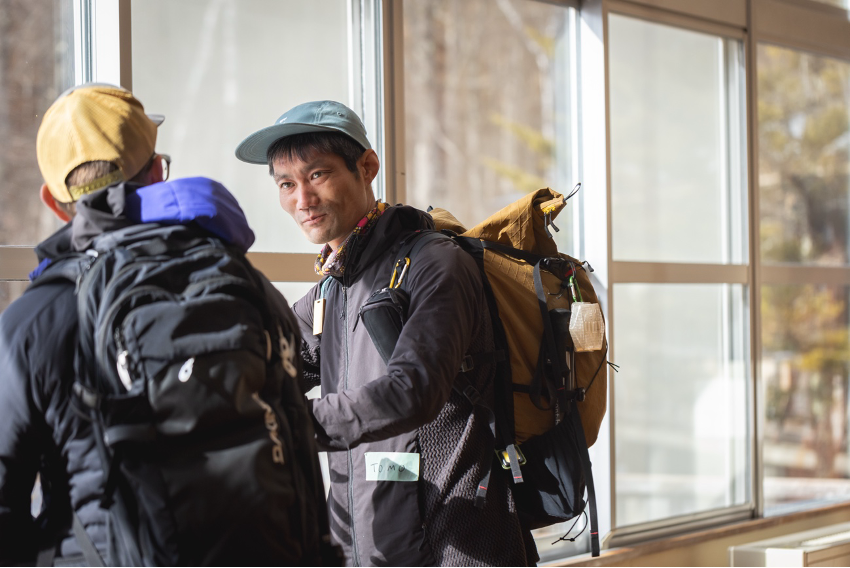
Proven Skills to Make Your Climbing Dreams Come True
Originally from Saitama Prefecture, I live in Tokyo now.
I started working as a guide in 2007. Beginning my career as a guide and tour conductor at a travel agency, I gained experience on a variety of mountains, from the “100 Famous Japanese Mountains”, “200 Famous Japanese Mountains”, and low-mountain hiking here in Japan to Nepal, South America, and Kilimanjaro overseas. In 2012, I struck out on my own to work as a freelance guide, and in addition to being certified as a Stage III Mountain Climbing Guide by Japan Mountain Guides Association, I have a number of other qualifications such as being certified by UIMLA (Union of International Mountain Leader Associations) as an International Mountain Leader. I guide clients not only in the Koshin-etsu region consisting of the prefectures of Nagano, Yamanashi, and Niigata, where a number of mountain ranges are concentrated, but also in various locations elsewhere.
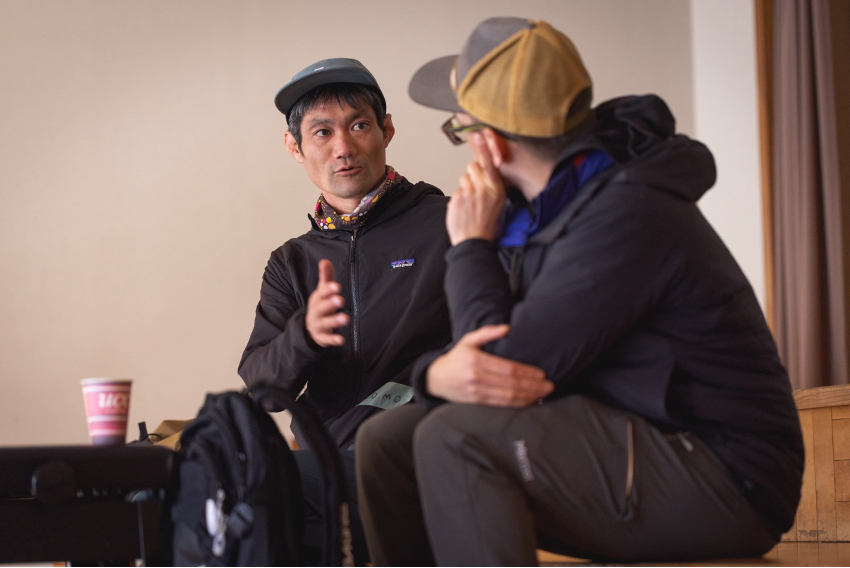
My guide work is characterized by being kept to a very limited number of clients, and by my ability to produce custom-made plans in accordance with a client’s wishes.
While we all enjoy mountains, different people are interested in different points about them. I feel many Japanese are drawn to flowers and plants, but foreigners want more explanation about animals like birds and monkeys or the rocks and boulders that come from volcanic eruptions. I have been supporting visitors from abroad since I struck out on my own over 10 years ago, and I feel there are some differences in their style of walking depending on their country or region. I accumulate knowledge and experience day by day to fulfill the wishes of as many clients as possible, whether they are people who want to plow ahead at a fast pace or people who want to walk slowly and see the scenery, plants, and animals.
In addition, while I naturally want them to enjoy the scenery, plants, and animals, maintaining safety and offering advice on how to use their bodies are also important parts of a guide’s job.
For example, my advice will include a precise route. Thanks to map apps anyone can use with ease, the risk of getting lost is now lower. However, there are many places where you can lose your way even on typical mountain trails, such as steep slopes and rocky places. In such places, coming up with the optimal path and offering advice on how to move and where to put your feet to move forward safely and easily is also the role of the guide. In many cases, clients who have tackled mountains they thought would be physically difficult have told me, “It’s so different doing this with a guide!”
Moved by the Himalayas to Start Climbing
love traveling and there was a time when I was a backpacker, having visited 108 countries to date. In the beginning, my aim was to enjoy sightseeing and interact with people locally, but it was during my days as a university student that mountain climbing entered the equation. I was traveling with friends in India when I got sick and suddenly had to stay a while in Nepal.
Now, Nepal has the Himalayas, the mountain range called “The Roof of the World”, as well as the world’s highest peak in Mt. Everest. Even now, I can remember how moved I was the first time I saw those 8,000 m class peaks. I’d seen photos and videos of them, of course, but the beauty of the real thing is truly amazing. I had someone tell me a hiking route and set out on a walk, but no matter where I looked, it radiated an overwhelming presence.
My parents liked mountains, so I could recall them bringing me to them all over the place, but it was at that moment that I first thought, “I want to go to that mountain.” After returning to Japan, I talked to my friend in the university’s mountaineering club and started mountain climbing, getting totally drawn into climbing rocks and ice.
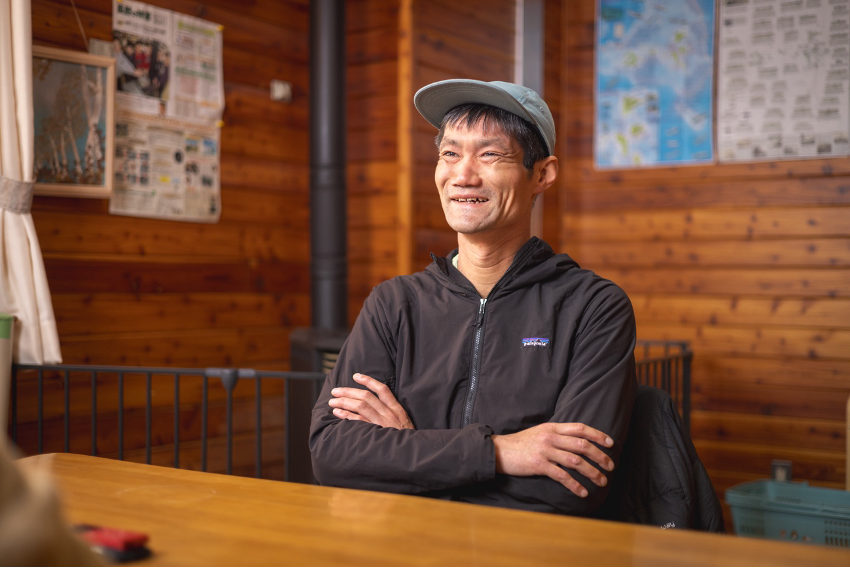
The joy I feel in climbing is that of thrills and the sense of liberation. Challenging a mountain always puts your life closer to danger, until you are standing right there with your heart racing as you wonder, “Can I really climb this wall?”, and you have to realize “Maybe I won’t make it back.” Once I make it safely back down the mountain, I take a hot spring bath and eat some delicious food, and I wouldn’t trade anything in the world for the euphoria I feel then. Once you’ve had a taste of the sense of liberation after overcoming the incredible stress of “death”, I think everyone probably gets hooked on it.
Sharing the Enjoyment, and Wanting to Smile Together about Japanese Culture
When working as a guide, I make plans to suit the client. We don’t suddenly tackle a high mountain or visit someplace they will feel in danger. I always focus so that after setting their various objectives and challenging them, we can all share that sense of liberation and euphoria every time.
Specifically, the first point is choosing a style of mountain climbing that fits the level of the team. Since leaving them with nothing but painful, bitter memories so they say, “I’m never doing that again!” would be defeating the purpose, ascertaining just the right amount of challenge is where a guide really shines. I plan it so that before or after mountain climbing, they can spend a relaxing time at a hot spring or restaurant, so they’ll think, “I want to go do this again.”
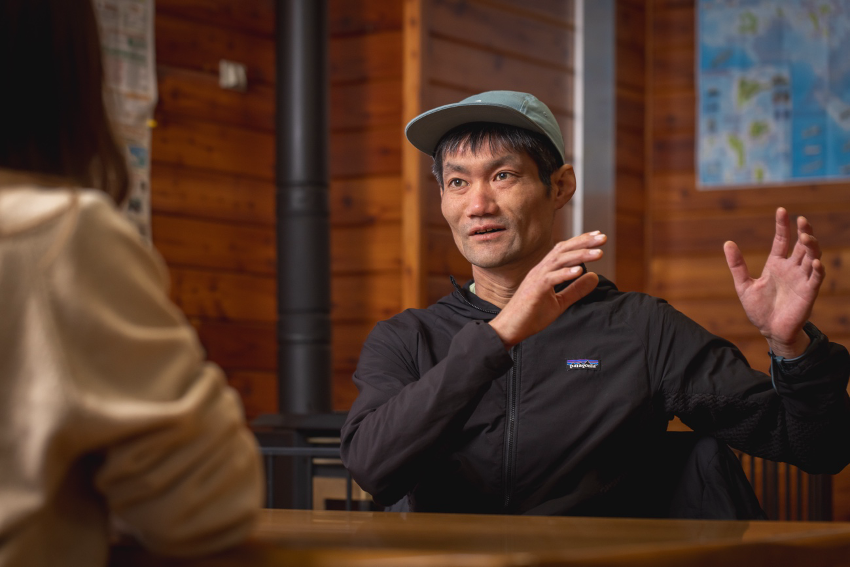
Up in the mountains, when I see some beautiful scenery, I make sure to say out loud, “Beautiful view, isn’t it?” That doesn’t just go for the scenery but applies to little flowers and animals like birds. For some reason, people always look down when things get hard, and when the air gets thin at elevations over 3,000 m, your field of view becomes narrower than normal. When I say something like that to them, it gives them a chance to stop and catch their breath, widen their field of view, and find some joy. But when I do it, I’m simply trying to tell them about something moving I’ve found in nature.
One bit of culture I’d like to share with visitors from abroad is “Japanese mountain huts”. For example, mountain huts in Europe have a cozy shower and delicious meals, and they are places prepared to welcome guests. They are such charming places that visiting the mountain huts becomes the purpose of mountain climbing, with people saying things like, “Let’s go up to that mountain hut and eat the carrot cake.”
In Japan, on the other hand, mountain huts were built as a place for mountain-worshiping monks to sleep or “a place to survive for a night” for those engaging in work such as hunting, fishing, or charcoal-making.
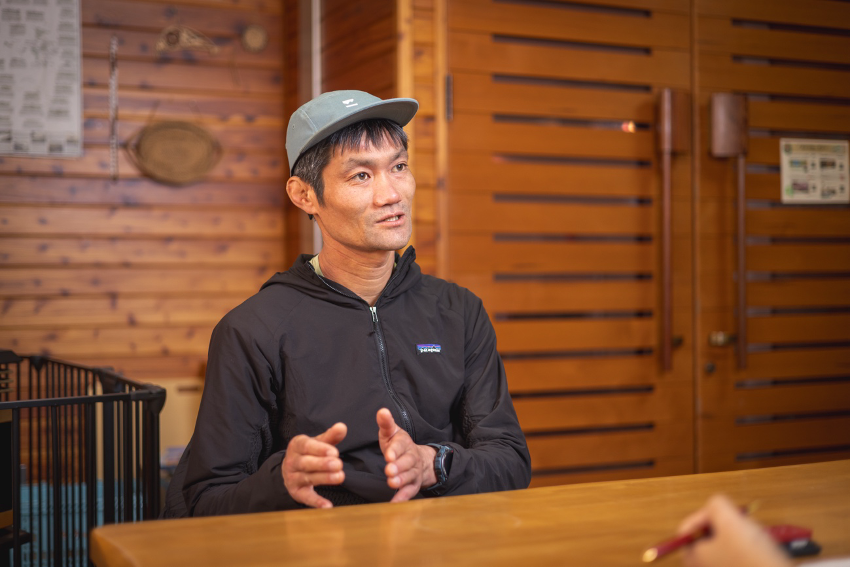 The space is so cramped you can’t roll over in your sleep, and it’s normal to sleep with everyone packed in there, while the meals Japanese food and pretty much only one thing to choose from. Recently, the number of charming mountain huts with their own unique personality has increased, and with reservations required they have added a few amenities, but I personally think that Japanese mountain huts are “tough and a little inconvenient”. When I inform foreign clients of this ahead of time, they say, “What’ll I do? Will I really be able to stay in a place like that?!” And while they’re anxious, I can also see that they’re excited. “This is what Japanese mountain huts are all about,” and this is one bit of culture I want to continue to share with them.
The space is so cramped you can’t roll over in your sleep, and it’s normal to sleep with everyone packed in there, while the meals Japanese food and pretty much only one thing to choose from. Recently, the number of charming mountain huts with their own unique personality has increased, and with reservations required they have added a few amenities, but I personally think that Japanese mountain huts are “tough and a little inconvenient”. When I inform foreign clients of this ahead of time, they say, “What’ll I do? Will I really be able to stay in a place like that?!” And while they’re anxious, I can also see that they’re excited. “This is what Japanese mountain huts are all about,” and this is one bit of culture I want to continue to share with them.
Remaining Safe and Secure, Making More Friends, and Adoring the Stunning Scenery
My latest training touches on international standards of first aid and medical knowledge in the field again, and I was keenly aware of the difficulty of responding in English. There’s a lot of technical jargon we don’t use in normal communication, and I was afraid the words won’t come to me instantly. The same goes for rope work, but you do it over and over until it’s second nature, I think, so I just want to stay focused every day and improve my skills.
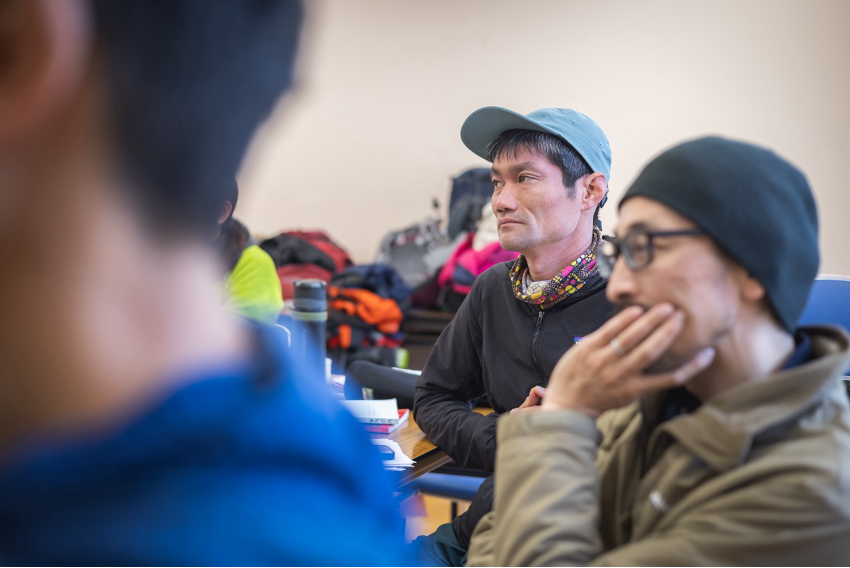
I’m happy to have another opportunity like this, as it creates interaction with fellow guides and allows us to meet new friends. Fundamentally, we go out in our respective fields and spend a lot of time with clients, so we don’t get very many chances to interact with fellow guides. In light of my own age, I want to talk with those who’ll be doing this work in the future and focus some of energy on raising bringing them up. I’d like to share the skill, experience, and knowledge I’ve gained so far, and create excitement about the culture of enjoying the mountains of Japan.
If I were asked to name mountains or areas I like in Nagano Prefecture, there’d really be no end to the list, but if I have to give one, I suppose it would be the ridgeline of Mt. Hotakadake as seen from Mt. Nishihodakadake. I suppose you could also say from Kamikochi. Looking at that rough rock face, my heart races as I think to myself, “If it were me, I wonder what approach I’d take,” and it’s especially pretty in the instant when the morning sun or setting sun hit it and make every bump and crevice stand out in sharp relief, so I could just look at it forever. It can only be enjoyed that way at those set times on sunny days, but if the conditions are right, I really hope you’ll take in that view.
There are mountains called “alps” in places all over the world, but the Japanese Alps Nagano Prefecture is so proud of hold their own against mountains overseas, and I can recommend these mountains. The views are so stunning that if you were to cut out some pictures of them, people might mistake them for the Himalayas, so by all means, let’s go see them together.
